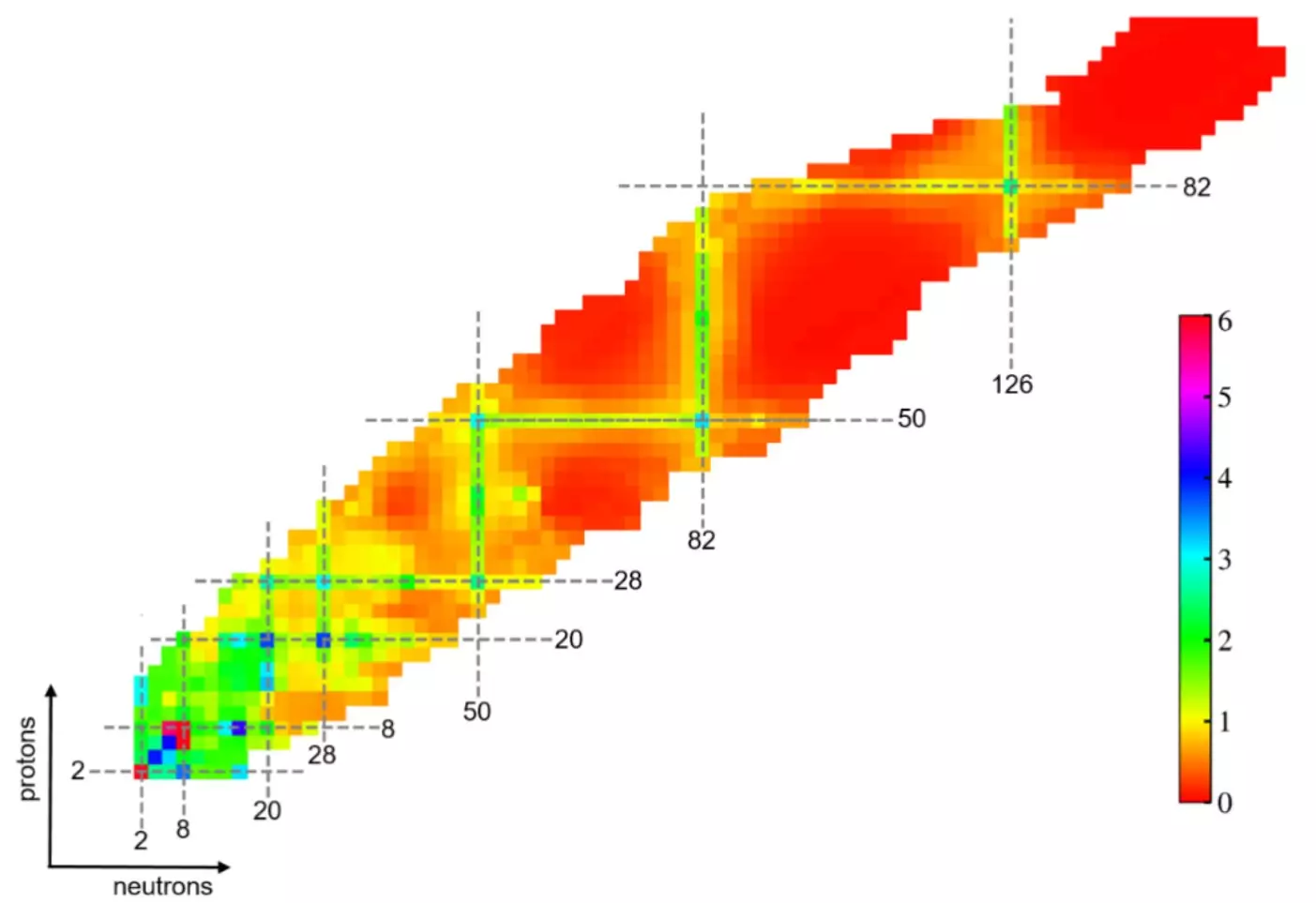In recent advancements in nuclear physics, a research team has employed cutting-edge machine learning methodologies to explore nuclear shell structures significantly deviating from stability. This innovative study published in Physics Letters B signifies a transformative moment in our grasp of atomic nuclei, unraveling complexities associated with nucleons (protons and neutrons) and their arrangements. Collaborating institutions, including the Institute of Modern Physics (IMP) of the Chinese Academy of Sciences, Huzhou University, and the University of Paris-Saclay, have spearheaded a project that not only investigates known phenomena but also raises pivotal questions about the validity and permanence of established “magic numbers.”
Magic numbers are specific numbers of protons or neutrons that confer enhanced stability upon a nucleus, making it less prone to decay. Historically identified in the 1930s, these include values such as 2, 8, 20, 28, 50, 82, and 126. The significance of these numbers lies in their relationship with the shell model of the atom, which mirrors electron configurations in a more familiar context. Thus, researchers have long viewed these magic numbers as foundational to understanding atomic stability and nuclear structure. Nevertheless, the present research challenges this assumption, questioning whether these magic numbers are truly immutable as nuclei venture further from the stability line.
Focusing on two intriguing cases—tin-100 and oxygen-28—the research highlighted the double-magic nature of tin-100, while simultaneously uncovering the disintegration of the neutron magic number 20 in oxygen-28. Associate Professor Lyu Bingfeng from IMP emphasized the crucial inquiry into whether traditional magic numbers persist in these unstable nuclei and hinted at the potential emergence of new magic numbers capable of reshaping our understanding of nuclear physics. These explorations are compelling, as they not only link theoretical models to experimental findings but also signal a shift towards an updated paradigm in nuclear structure science.
Machine learning, a powerful tool redefining various scientific disciplines, has made remarkable contributions to nuclear physics. By examining intricate features of atomic nuclei, this research has achieved unparalleled accuracy in reproducing experimental data on low-lying excited states and electromagnetic transitions. According to Wang Yongjia from Huzhou University, the results obtained far surpass those derived from existing nuclear models and other machine learning techniques. This accuracy illustrates the capability of machine learning to distill vast datasets into coherent insights and predictive capabilities concerning nuclear behavior.
Revelations and Future Directions in Nuclear Physics
The striking findings elucidated in this study shed light on the fragile state of traditional nuclear understanding. The disappearance of the neutron magic number 20 in oxygen-28 raises essential questions and underscores the evolving nature of nuclear properties as isotopes deviate from stability. Conversely, the retention of the magic number 50 in tin-100 suggests a degree of robustness in certain regions of the nuclear landscape. Moreover, the research underscores the relationship between fundamental nuclear properties and the refinement of machine learning algorithms, promoting advancements in theoretical models and experimental frameworks.
The outcomes of this groundbreaking study not only enhance theoretical insights but also serve as a roadmap for subsequent experimental investigations. The high-precision predictions regarding low-lying excited states and electromagnetic transitions can guide future measurements, particularly at rare-isotope facilities worldwide, such as the High Intensity heavy-ion Accelerator Facility in China. As researchers continue to harness these advanced computational techniques, the promise of uncovering new phenomena in nuclear physics remains ripe for exploration.
The collaboration between machine learning and nuclear physics signifies a new era in our pursuit of knowledge about atomic structures. The refinement of our understanding of magic numbers and the evolution of shell structure heralds exciting possibilities for future research in nuclear stability and behavior. As we continue to probe the intricate workings of the atomic nucleus, the integration of advanced computational methodologies will undoubtedly play a crucial role in revealing the enigmatic world of the nuclear realm. The findings discussed pave the way for a deeper appreciation of the underlying principles governing nuclear stability and transition, ultimately enriching the entire field of nuclear physics.


Leave a Reply